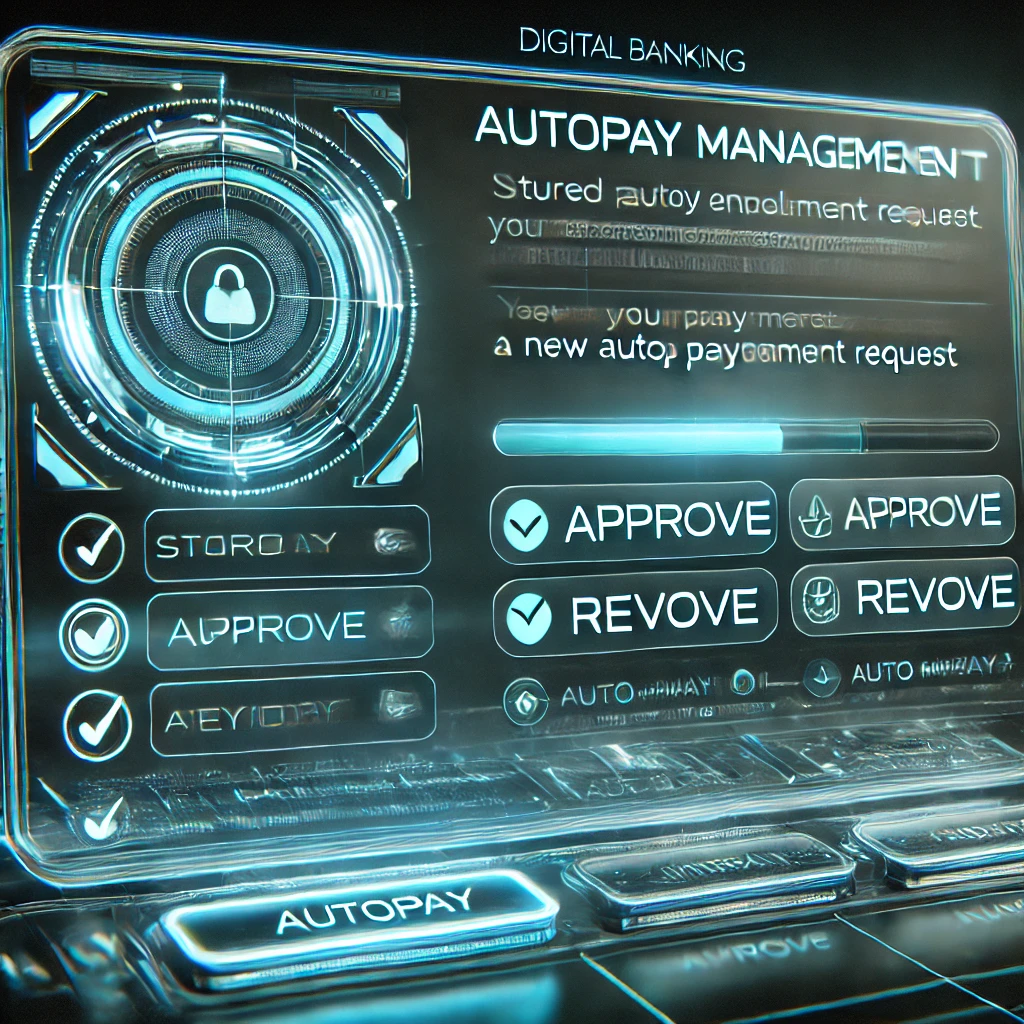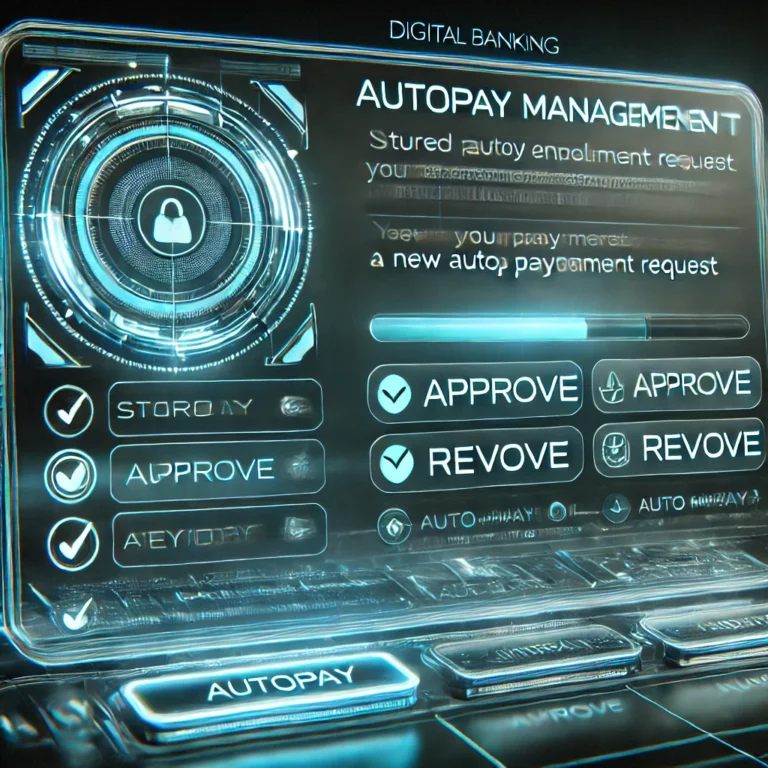
Introduction
The way we handle autopay today is broken. Many merchants still use archaic methods like a $1.00 or $0.00 authorization hold to verify a card before saving it for recurring payments. This outdated system leaves customers in the dark about where their card details are stored, exposing them to unnecessary charges, fraudulent billing, and the frustration of tracking down subscriptions they no longer want.
The solution? A modernized, API-driven autopay system that provides transparency, security, and control for consumers while making it easier for merchants to comply with regulations.
This blog post will explore how a revamped autopay system could work, why it is necessary, and the financial impact such a system could have on consumers.
The Current State of Autopay: A Flawed System
Today, most merchants follow a similar process to enroll a customer’s card for autopay:
- The merchant charges a $1.00 or $0.00 authorization to verify the card.
- If the transaction succeeds, the card is stored for future billing.
- The user is often not notified that their card has been stored.
- The merchant can then charge the card at any time, with little oversight from the bank.
- Users only find out about unauthorized charges when they check their bank statements.
This system leads to:
- Subscription traps – Consumers forget where their cards are stored, leading to unnecessary charges.
- Fraudulent charges – Merchants can store raw card data without formal enrollment.
- Difficult cancellation processes – Some businesses make it nearly impossible to remove saved cards.
With subscription-based services skyrocketing, consumers need a better way to track and control where their cards are stored.
A New Approach: API-Driven Autopay Enrollment & Management
Instead of merchants using random authorization holds, banks and card networks should require merchants to use an API-driven autopay enrollment system. Here’s how it would work:
1. Enrollment API: A Required Step for Autopay
Merchants must call a dedicated autopay registration API that:
- Logs the merchant’s request with the bank.
- Sends a real-time notification to the cardholder (via banking app, SMS, or email).
- Requires the cardholder to approve or reject the autopay enrollment.
2. Release API: Mandatory for Cancelling Autopay
- Merchants must send a release request to remove the card when a user cancels a subscription.
- Banks track and confirm with users that their card has been successfully removed.
- Users can manually force-remove a card through their banking app.
3. Autopay Management Dashboard
- A dedicated section in banking apps where users can:
- View all merchants storing their card.
- See upcoming autopay transactions.
- One-click revoke any merchant’s access.
- Set spending limits for specific autopay transactions.
- Receive alerts if an unregistered autopay charge is attempted.
This system would eliminate the current guesswork involved in tracking stored cards and would put users back in control of their money.
The Financial Impact: How Much Could Consumers Save?
A streamlined autopay system could save consumers billions of dollars annually. Here’s why:
1. Eliminating Unwanted Subscriptions
A 2023 study found that U.S. consumers waste an average of $200–$500 per year on subscriptions they don’t use. With an easy-to-use dashboard, users could quickly identify and remove unwanted charges, leading to immediate savings.
2. Stopping Unauthorized Transactions
Fraudulent autopay charges account for $4.5 billion in annual losses in the U.S. alone. An API-driven system would prevent merchants from charging cards without explicit user approval, dramatically reducing these losses.
3. Reducing Customer Service Costs
Currently, users spend hours contacting banks and merchants to dispute charges or remove stored cards. A one-click revoke feature would cut down on wasted time and lower banks’ customer service costs, which could be passed down as savings to consumers.
Addressing the Merchant Side: Compliance and Security
While consumers would greatly benefit from an API-driven autopay system, merchants also have a role to play.
Why Merchants Should Support This Change
- Reduced chargebacks – Fewer disputes mean less lost revenue.
- Stronger security – Prevents merchants from storing raw card data unsafely.
- Better customer trust – Transparency leads to higher customer retention.
Regulatory Push: Making It Mandatory
To ensure merchant compliance, payment networks (Visa, Mastercard, Amex) and regulators (CFPB, FTC) should enforce:
- Mandatory use of the Enrollment API before storing a customer’s card.
- A requirement to process Release API calls when customers cancel a service.
- Heavy fines for merchants who store card data outside this system.
Potential Challenges & Solutions
1. Merchant Resistance
- Problem: Some businesses rely on “subscription traps” to keep customers paying.
- Solution: Regulations and bank enforcement will make it illegal to store card data without explicit user approval.
2. Technical Implementation
- Problem: Updating global payment systems is complex.
- Solution: Phased rollouts with pilot programs among major banks.
3. Consumer Awareness
- Problem: Users might not know about these new controls.
- Solution: Banking apps should offer clear tutorials, plus incentives (like cashback) for managing autopay wisely.
Conclusion: The Time for Change Is Now
The current autopay system is outdated, opaque, and costing consumers billions of dollars every year. By implementing a modern, API-driven enrollment and management system, we can:
- Give consumers full control over their stored payment methods.
- Reduce fraudulent and unauthorized charges.
- Save customers money by preventing forgotten subscriptions.
- Improve merchant compliance with data security regulations.
It’s time for banks, regulators, and payment networks to take action and mandate a smarter, more transparent autopay system. Until then, consumers should stay vigilant and use existing tools to track and manage their subscriptions.
What do you think? Should banks and payment networks implement this system? Share your thoughts below!




